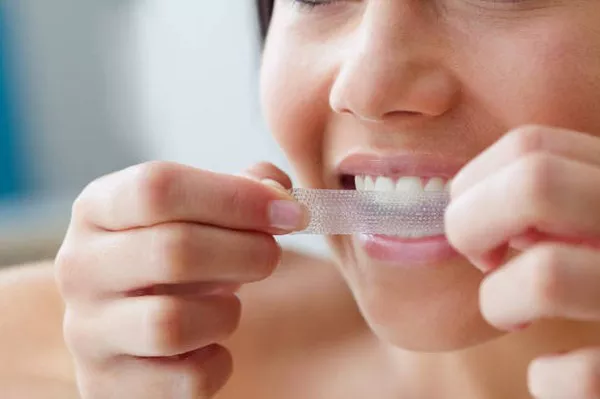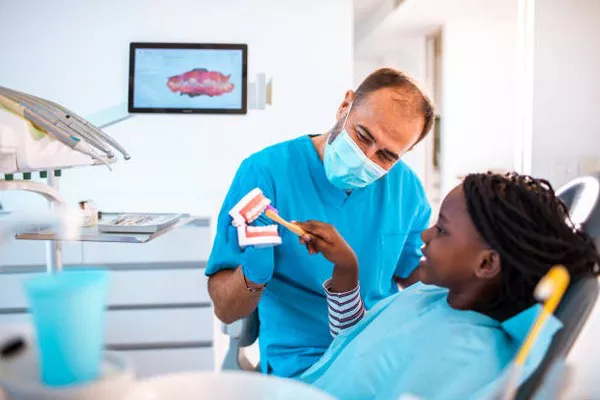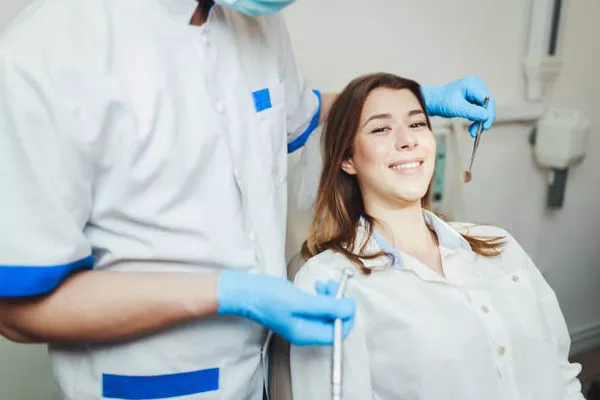Orthodontic preparation and guidance Dental dysalignment is a serious oral disease. More than 80% of people with dental dysalignment have different degrees of gingivitis, gingival bleeding, dental stone formation, dental surface pigmentation, bad breath, dental caries and other symptoms.
Because of the uneven alignment of teeth, bad occlusion, chewing food when the individual teeth dislocation, bear too much force, easy to cause periodontal burden too much and periodontal disease, gingival swelling, gingival atrophy, tooth root exposure and other symptoms.
These misaligned teeth may cause gingival necrosis due to long-term traumatic occlusion, followed by tooth discoloration. If not treated in time, chronic periapical inflammation may result.
Therefore, the effect of orthodontic treatment on maintaining oral health is very big, which can not be treated lightly.
So, what do we need to do before orthodontic preparation?
Orthodontic CENT GOES 6 STEPS THE CONSULTATION BEFORE THE FIRST STEP, ORTHOdonTIC AND CHECK: AFTER THE DECISION UNDERTAKES ORTHOdonTIC, THE CONSULTATION BEFORE SHOULD UNDERTAKE ORTHODONTIC TO REGULAR HOSPITAL STOMATOLOGICAL DEPARTMENT FIRST AND CHECK.
At your first visit, your doctor will talk to you about your teeth and ask you what you want to correct and what you want to achieve.
It usually includes what are your main concerns?
How do your teeth line up?
What does your face look like when you smile?
How is your facial coordination?
How is your bite?
How the teeth play their functions in chewing and the health status of the teeth.
After that, a series of preparations are needed, such as bite marks (i.e. taking the model), face photography, X-ray positioning film, liver function test and so on.
Doctors will determine the diagnosis and make treatment plans based on the results of model analysis and X-ray projection measurements.
The second step, orthodontic treatment of dental disease: orthodontic treatment, must be treated in the mouth of the teeth, periodontal diseases, such as the treatment of dental caries, cleaning dental stones, etc.
This is important because only healthy teeth can undergo orthodontic treatment. If the teeth are in poor condition, it will affect the process of orthodontic treatment, and in severe cases, it will lead to treatment failure.
So don’t neglect dental check-ups.
Some people may go through a long period of periodontal treatment before they can have orthodontic treatment, but it is worth it.
Step 3: Determine the treatment plan: At the first visit, the doctor will analyze your problem in detail and discuss the treatment plan with you, determine whether to pull the tooth, how many teeth to pull, and the practical issues such as the course of treatment and the cost.
Generally, simple corrections to align the teeth won’t involve extraction, but treating more complex dental problems will involve extraction, and in some cases your doctor may recommend removal of your wisdom teeth.
It depends on different circumstances.
The duration of orthodontic treatment is generally one and a half to two years.
Young, mild patient time will be shorter, adult orthodontic time will be appropriately extended.
The fourth step, tooth extraction before treatment: tooth extraction should be carried out before treatment.
General orthodontic extraction for symmetrical tooth extraction, extraction of four or eight.
The extraction of teeth under the guidance of the doctor will not have any harm to the body, but must go to the regular dental hospital, especially in the extraction of wisdom teeth, do not covet the cheap, and damage to the teeth.
Do not pull out more than two teeth at a time. Generally, the same side of the tooth is pulled out together, which is conducive to tooth recovery.
After a week or so, if no special abnormalities or adverse reactions are found, the tooth can continue to be extracted.
The fifth step, the installation of orthotics: after the extraction of teeth can continue to visit, generally at this time the doctor will install orthotics for you.
Some severe dental deformities fail to be treated with orthodontics and must be corrected surgically.
After wearing the orthotic device, it is necessary to do in strict accordance with the doctor’s instructions and actively cooperate with the doctor, so as to ensure the treatment effect.
In the first three or four days of wearing the orthodontic device, the orthodontic device will not adapt to, mild pain, acid swelling and other uncomfortable feelings.
This is normal and takes some time to get used to.
It is also important to maintain good oral hygiene during orthodontic treatment, as the disease resistance of teeth and periodontal tissues is reduced during orthodontic treatment, and poor oral hygiene can lead to more dental and periodontal caries than usual.
The sixth step, regular visit: after the installation of appliance, every other month or so to visit once.
The orthodontist will gradually add force to the appliance depending on the individual treatment.
This in turn causes pain.
Some people think that the pain is caused by excessive force, in fact, the right orthodontic force can sometimes cause tooth pain.
Therefore, the use of appropriate orthodontic force in orthodontic treatment, prevention of trauma is a measure to reduce pain.
As the duration of treatment increases, the severity of this pain decreases.































